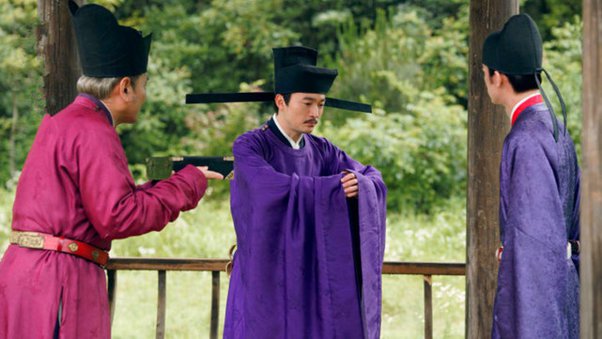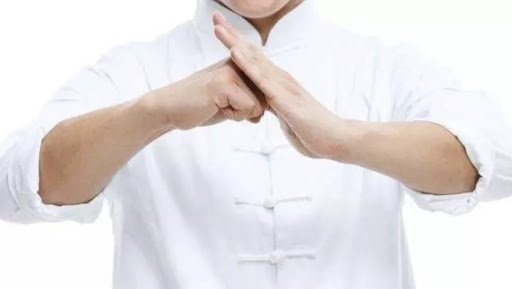Shaking hands comes from Europe, the days of knights (isn’t English strange? the days of knights, not the days of nights). Knights disdained the left hand, calling it sinister, which means both left and evil. A weapon was held in the right hand. If we let each other clasp our right hands, our weapon hands, we were showing trust.
When Chinese bow, usually the hands are not dangling by your sides. When I was in college and graduate school (NTNU), when the teacher entered, we all stood up and bowed, with our hands at our sides; this was repeated when the teacher left.
But usually you’re doing something with your hands. Here is a picture of 作揖 the yi, which has proved its value in the days of COVID:

Martial artists are familiar with this style, which is also very common:

How much you bow depends on the situation and the person you are greeting.